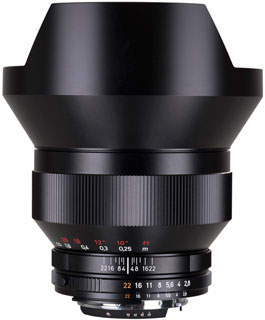
|

$220 SAVE $130 = 37.0% Western Digital 16.0TB Western Digital Ultrastar DC HC550 3.5-in… in Storage: Hard Drives
|

|

|

|

|
Zeiss 15/2.8 Distagon Q&A — Veiling and Ghosting Flare
Related: digital sensor, ghosting flare, lens flare, wide angle, Zeiss, Zeiss 15mm f/2.8 Distagon, Zeiss Distagon, Zeiss DSLR Lenses, Zeiss Lenses
This is one of several pages resulting from the March 13, 2012 discussion with Staff Scientist Dr. Hubert Nasse. See the original list of questions.
These pages are a summary of the discussion based on notes taken, and as reviewed by Dr. Nasse. Bracketed comments [ ] are editorial in nature.
Flare control must be designed in. In particular, one must avoid ghosting at the focal plane; no lens coating is good enough to overcome that design requirement.
Often a design must be iterated in order to achieve the required flare control. Testing a real lens is still the best way to verify that flare unanticipated flare issues do not arise (including those from internal lens parts).
Veiling and ghosting flare control in the 15/2.8 Distagon is generally superior to the 21/2.8 Distagon.
Lens coatings offer 8-10 stops of flare resistance, which translates into 15-20 stops vs the brightness of the sun in the frame for most subject matter, but the sun and deep shadow can offer as high as 27 stops of brightness range. No lens coatings as yet can cope with that level of dynamic range, and so the design itself must plan for avoidance of ghosting flare, and testing of prototypes (real lenses) must prove out that design.
Research continues on new lens coatings, but lens coatings must be durable, cleanable, stable over time and through heat/cold, and practical in production.
Dr. Nasse explains further:
All ghost images are caused by an undesired light path which includes two reflections from any pair of surfaces of the system (one could say that the system then works like a catadioptric lens, a combination of lenses and mirrors).
We distinguish between glass-glass ghosts and glass-sensor ghosts. The sensor is nowadays also one or usually several glass surfaces. A normal coated lens surface attenuates the reflected amount of energy by 8-10 f-stops. So the coating makes that the catadioptric path of a glass-glass ghost is attenuated by 16-20 f-stops.
Attenuation is lower for most glass-sensor ghosts since the sensor as one of the mirrors in the catadioptric path has higher reflectance than coated lenses. This was already true in film times. So with the presently available coating technologies the attenuation of the ghost paths is not good enough to cover the possible dynamic range of subjects including the light source and deep shadow. Additional attenuation is required by distributing the light of the ghost path over a larger area of the sensor. This is achieved by avoiding ghost images which are focused near the image plane. So this is another boundary condition of the optical design to avoid lens curvatures which cause focused ghost images, which is often in conflict with what the correction of the aberrations asks for.

Seagate 22TB IronWolf Pro 7200 rpm SATA III 3.5" Internal NAS HDD (CMR)
SAVE $100

















